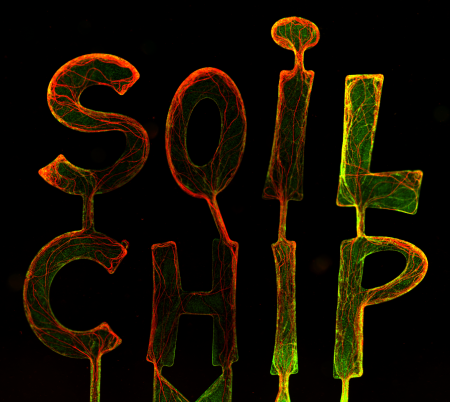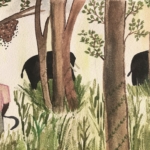Soil Ecology from the microbe’s eye view – Edith Hammer
Edith Hammer - Lund University
- Start Friday 08 Mar 2024 4:15pm
- Finish Friday 08 Mar 2024 5:15pm
- Venue School of Geography and Environment Lecture theatre
- Watch seminar recording (external site)

Abstract:
Soil is arguably the most complicated biomaterial on the planet. It is the largest terrestrial carbon sink, and the most species rich habitat on earth. Microorganisms driving biogeochemical cycles live and interact in the soil’s intricate pore space labyrinth, but they difficult to study in realistic settings because of its opaqueness. We recently developed microfluidic model systems that simulate the spatial microstructure of soil microbial habitats in a transparent material, which we call Soil Chips. They allow us to study the impact of soil physical microstructures on microbes, microbial behavior and realistic microbial interactions, live and at the scale of their cells.
Using microbial model strains, we could show the partly opposing influence of the pore space geometry on the growth and degradation activity of the two microbial groups bacteria and fungi in synthetic communities. Different fungi, including litter decomposers and mycorrhizal, showed contrasting space exploring strategies when studied at their hyphal level. Inoculating the chips with soil brings a large proportion of the natural microbial community into our chips to study natural communities including their complex food webs, and self-organizing interactions with soil minerals in early aggregation processes. Chemical imaging of microbe-mineral interactions at nanoscale at synchrotrons reveal aggregate development and microbial gluing agents.
The soil chips enable us to study the influence of trophic interactions such as the presence of predators on bacterial and fungal nutrient cycling, and various predation strategies of protists otherwise difficult to culture. Beyond the scientific potential, the chips can also bring soils closer to people aiming to make more to appreciate their beauty and increase engagement in soil health conservation.
Biography:
Edith is a Senior Lecturer/Assoc Professor in Soil Microbial Ecology at Lund University. Her research focusses on microbial processes that drive the nutrient cycles in soils and are the base for healthy soil functions, such as its enormous carbon storage. She has developed so-called soil chips, microfluidic micromodels that mimic soil pore space structure to study organisms and processes embedded in their spatial settings. Those enable the study of microbial processes and interactions at cellular scale, including organic matter degradation and physical occlusion, trophic networks and microbial behavior.
With a strong background in fungal and mycorrhizal ecology, she has recently been broadening her projects to complex communities also including the often-overlooked protist. With help of imaging from the soil chips she also wishes to increase awareness of the fragile ecosystem with its intricate biodiversity. She leads the branch for climate and C-cycle science of the Swedish strategic research environment BECC, the Section Soil Biology at the European Geosciences Union and a recent initiative for soil microbe outreach (“soilwatching”).
The Leverhulme Centre for Nature Recovery and Biodiversity Network are interested in promoting a wide variety of views and opinions on nature recovery from researchers and practitioners.
The views, opinions and positions expressed within this lecture are those of the author alone, they do not purport to reflect the opinions or views of the Leverhulme Centre for Nature Recovery/Biodiversity Network, or its researchers.


